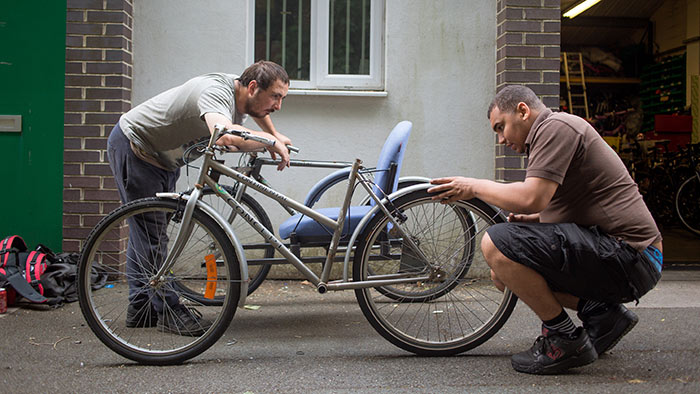The number of people aged 85 and over
will more than double in the UK over the next 25 years. With an ageing population will come additional pressures on services and resources – and one area of specific concern is housing.
Inappropriately designed and located housing can cause discomfort and suffering for older people,
increasing the chance of accidents and falls in the home, fuel poverty and exposure to the cold – as well as increased isolation and loneliness.
Recent research suggests the cost to the NHS from older people being poorly housed is over £600m a year. While some of the issues may be remedied with home improvements and adaptations, there is a need for more specialist accommodation for older people.
Our recent research, funded by the NHS and conducted in partnership with local authorities in Cambridgeshire, has focused on this very issue. We have found that if current trends continue, there will be stark shortages in specialist housing for older people across England by 2035. Specifically, our findings reveal that more than 750,000 additional specialist homes will be required by this date, in England alone, to deal with the shortfall.
Not enough homes
As people get older they have a number of housing choices. They can stay living in their home – and potentially receive care and support if required – or they can enter
specialist housing. This includes sheltered housing, often comprised of self-contained flats or bungalows reserved for people over the age of 55 or 60, with some shared facilities and on-site support. It also includes age exclusive housing, similarly reserved for older people, but without support.
Specialist housing also includes
Extra Care accommodation designed to meet the needs of frailer older people – with varying levels of care and support available on site. Extra Care housing gives people “their own front door” with options in some schemes to purchase properties.
Our research estimates that with an ageing population, there will be significant shortfalls in these types of specialist housing. We predict that nearly 90% of local authorities are likely to require at least 1,000 additional specialist dwellings between now and 2035.
Supply and demand
We also found that the greatest shortages in specialist housing are in more deprived areas of the country. This suggests that where housing markets are weakest, problems in supply are likely to be the most acute. Notable hot spots of under supply are found in Yorkshire and the Humber and the Northwest of England.
This pattern represents housing market failure caused by the reluctance of private developers of older people’s housing to enter these markets – because their schemes are not deemed financially viable. This has led to a reliance on public bodies, housing associations and other providers to meet these shortages, and to ensure there are affordable options for older people at a local level.
To help local authorities and housing providers understand the requirements in their areas, we have developed
a tool which can help them plan future housing provision. Using population projections and a wealth of other data, it recommends how many specialist housing and care beds are required in their area.
Understanding future needs
The findings from this research are sobering. Not only do many areas need significantly more specialist homes for older people, but we need to create accommodation suitable for an ageing population which may be suffering from more acute and multiple health conditions.
Extra Care housing is one solution and we recommend that 61% of local authorities will need upwards of 200 additional Extra Care homes by 2035. This will demand major changes to the way housing providers and local authorities plan and finance this form of provision.
What all this shows is that unless there is a radical change, shortfalls in supply will prevail and likely worsen. This means that more and more people will have to remain in housing unsuitable for their needs, with increased risks to their health and well-being. So much more can be done, it merely requires concerted investment and improved planning.
This article was originally published on
The Conversation on 3 May 2018. It was co-authored by
Ian Wilson, Principal Research Fellow at Sheffield Hallam University, and
Stephen Green, Research Fellow at Sheffield Hallam University.




